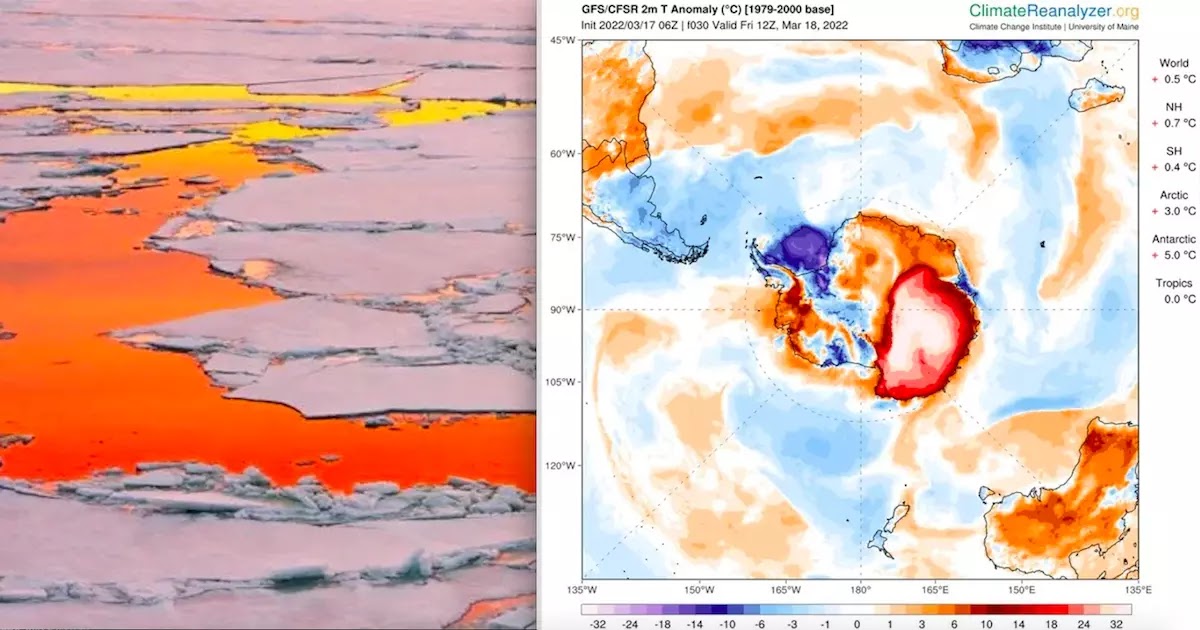
Record-breaking heatwaves have hit both Antarctica and the Arctic this week in what climate scientists are saying is a terrifying look into the future of the planet.
At a time when Antarctica is about to enter its wintertime, temperatures recorded in Antarctica were 47°C higher than normal, while the Arctic was 30°C higher than normal.
Antarctica's heatwave was most likely caused by an intense, slowly building high-pressure that started near Australia mixed with low pressure over the frozen southern continent. It was at the Concordia, an Italian-French research station, that the highest temperatures were recorded at over 40°C above the March average. Rain was even recorded as falling at the coast, a highly unusual event.
At the Australian Casey Station, temperatures hit both 9.2°C and a high of 18.3°C on subsequent days.
In the Arctic, a low-pressure system began on the coast of the United States while more warm temperatures funnelled from the Norwegian northern island of Svalbard, where a record temperature of 3.9°C was recorded.
It is worried that melting ice in the Arctic may mean that polar bears will not be able to hunt properly and may risk starvation.
The record temperatures come as the United Nations warned it is 'now or never' to stop climate change. The statement was made on the back of a report that said Earth was headed for double the targeted rise in temperature.
Jim Skea, Co-Chair of IPCC Working Group III which fights against climate change said:
"It's now or never, if we want to limit global warming to 1.5°C (2.7°F); without immediate and deep emissions reductions across all sectors, it will be impossible. This assessment shows that limiting warming to around 2C (3.6F) still requires global greenhouse gas emissions to peak before 2025 at the latest, and be reduced by a quarter by 2030."
While the report itself stated:
"These (reductions) can be achieved through lower energy consumption (such as by creating compact, walkable cities), electrification of transport in combination with low-emission energy sources, and enhanced carbon uptake and storage using nature," the report suggested. "There are options for established, rapidly growing and new cities."
[Based on reporting by: science alert]














COMMENTS